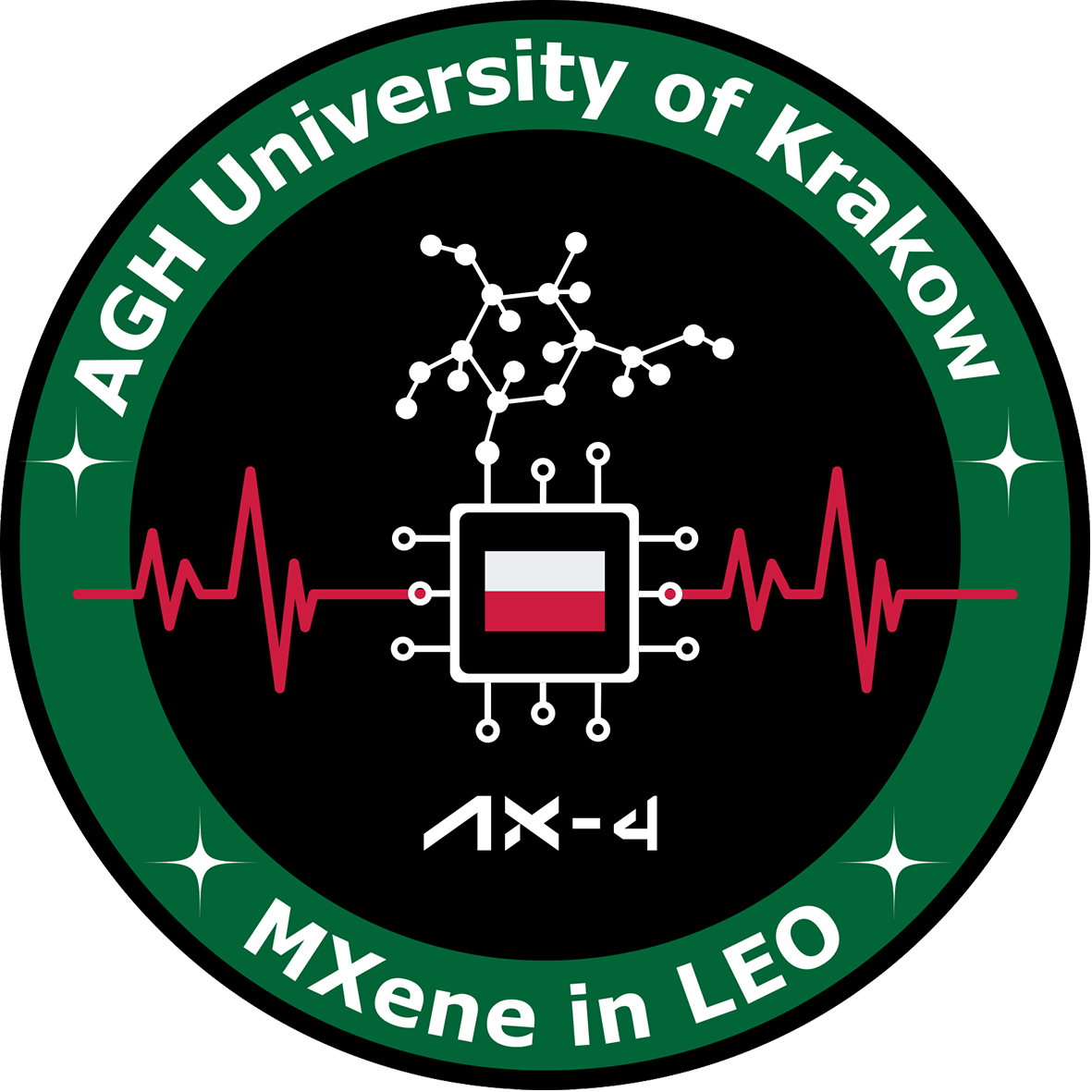Scientists during IGNIS mission to test astronaut's heart rate monitor with MXene nanomaterial-based sensor

Scientists from the AGH University of Science and Technology will check how a wrist heart rate monitor with a sensor based on the MXene nanomaterial will perform in space conditions as part of the "MXene in LEO" experiment, which will be carried out during the Polish space mission IGNIS.
"MXene in LEO" is one of 13 experiments as part of the Polish technological and scientific mission IGNIS to the International Space Station (ISS). The Ax-4 crew launch – with the Polish project astronaut of the European Space Agency (ESA) Dr. Sławosz Uznański-Wiśniewski – will take place on May 29. The mission will last two weeks.
The experiment focuses on the study of MXenes – modern nanomaterials with many potential applications during space missions. These conductive nanomaterials, discovered in 2011, are two-dimensional and consist of metal carbides, nitrides and carbonitrides. Scientists from AGH have been working on MXenes for several years; they use the titanium carbide "version" that they produce themselves. When enlarged to a large extent, the material resembles sheets of paper folded in a lasagna pattern: on the longer edges, MXenes have dimensions expressed in micrometers, but in terms of thickness, they are nanometers.

The "MXene in LEO" project involves testing the stability of MXenes in low Earth orbit. "For this purpose, we have prepared a small box measuring approximately 13 x 9 x 6 cm, which contains a PCB with printed MXene sensors, appropriately connected electronically. After switching on the start button, the experiment will run automatically for two weeks of the mission," Dr. Dagmara Stasiowska from the research team told PAP.
Additionally, scientists will test whether these nanomaterials can be used as next-generation sensors to measure vital signs during a space mission.
"For this purpose, we have developed wristbands. We have produced them from a biomaterial, bacterial cellulose, which can become an alternative to petroleum-based materials. We have then printed sensors for measuring the pulse on appropriately prepared wristbands. The operation of these sensors is possible thanks to the use of the so-called piezoelectric phenomenon: when MXene deforms as a result of movement, the resistance changes, as a result of which the voltage changes, and we see the result in the form of a measurement. There are many potential applications here; it all depends on how these sensors are calibrated," the scientist explained.
This part of the research requires the involvement of an astronaut, Dr. Sławosz Uznański-Wiśniewski. "After putting them on, the astronaut will have to perform a specific sequence of wrist movements, e.g. twist in one direction or bend in a specific way. We want to see if we are still able to measure this pulse accurately enough when the wrist is in motion," she explained.
Six such wristbands will be sent – each will be tested twice, so a total of 12 tests.
As Dagmara Stasiowska emphasized, one of the significant advantages of MXens is that they can be produced using a 3D printer – and these, as she said, are part of the equipment of the International Space Station. "It is similar with the wristband, which – if the appropriate infrastructure is created – could also be obtained in ISS conditions, because it is basically a material produced by bacteria from ordinary sugar. In the case of long space missions, it will be necessary to remotely monitor the health of astronauts, and in the case of our sensors, we will be able to not only repair them on site, but even produce them anew, from scratch," she added.
If the results of the experiment confirm the scientists' assumptions, the wristbands (or other elements that can be worn) could become next-generation sensors, contributing to the development of advanced medical sensors and telemedicine using nanomaterials.
The experiment coordinator is Dr. Shreyas Srivatsa. The research team from the Faculty of Space Technologies at AGH (formerly the AGH Space Technologies Centre) also includes: Prof. Dr. DSc, Eng. Tadeusz Uhl, Dr. Agata Kołodziejczyk, Dr. Eng. Krzysztof Grabowski, Dr. Eng. Dagmara Stasiowska, Dr. Darukesha Baraduru Hirematada, MSc Eng. Wojciech Guziewicz and MSc Eng. Sławomir Rudawski.
The team has filed a patent application for their wristband solution, so until they receive the patent, they cannot show it publicly or reveal more details.
Agnieszka Kliks-Pudlik (PAP)
acp/ bar/ amac/
The PAP Foundation permits free reprinting of articles from the Nauka w Polsce Service, provided that you inform us by e-mail once a month about the use of the service and provide the source of the article. In portals and internet services, please include the linked address: Source: naukawpolsce.pl, and in journals the annotation: Source: Nauka w Polsce Service - naukawpolsce.pl. The above permission does not apply to: information from the "World" category and any photographs and video materials.
naukawpolsce.pl





